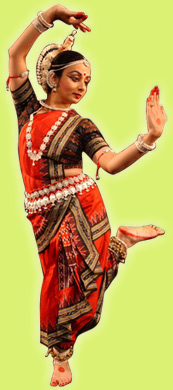Odissi Dance | 03 Jan 2020
Odissi dance is one of the classical dances of India.
- It is indigenous to Orissa, eastern India, and follows the principles of the Natya-shastra.

- Evolution
- The dance has its origin in the temples.
- The carvings found at the Udayagiri Monastery denote that Odissi was patronised as early as the 2nd Century BCE and the trend continued unabated until about the 16th Century AD.
- After surviving the tumultuous years from 16th century AD till independence, Odissi underwent a renaissance of sorts which helped it become the global phenomenon it is today.
- The classical music and dance form of Odisha was prefixed with “Odissi” by noted Odia poet Kabichandra Kalicharan Pattanayak, who was the centre of the cultural revival of Odisha post-independence, to retain its distinct identity.
- Dance Techniques
- Odissi dance form can be broken down to the movement of the head, bust and torso and the accompanying gestures and expressions.
- The techniques of movement are built around the two basic postures of the Chowk and the Tribhanga. The chowk is a position imitating a square - a very masculine stance with the weight of the body equally balanced. The tribhanga is a very feminine stance where the body is deflected at the neck, torso and the knees.
- Odissi dance deals largely with the love theme of Radha and Krishna.
Natyashastra
- Natyashastra, in full Bharata Natyashastra, is a detailed treatise and handbook on dramatic art that deals with all aspects of classical Sanskrit theatre.
- It is believed to have been written by the mythic Brahman sage and priest Bharata (200 BC – 200 AD).
- Its many chapters contain detailed treatments of all the diverse arts that are embodied in the classical Indian concept of the drama, including dance, music, poetics, and general aesthetics.
- It is also known as the fifth veda as it has been evolved by taking words from the Rigveda, music from the Samaveda, gestures from the Yajurveda and emotions from the Atharvaveda.
